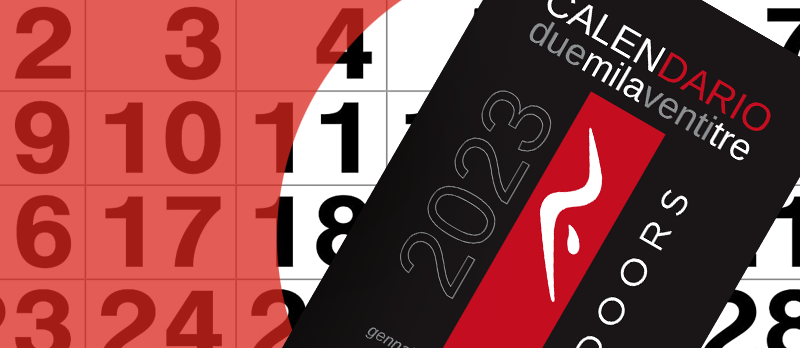2022 is coming to an end, there are still more intense months ahead. Good planning can help us to be even more connected, efficient and productive. As usual, the new Alias 2023 calendar is coming soon: a small gift for all Alias’s customers, suppliers and friends.
By now a regular annual tradition that will accompany us day after day, week after week through the months of 2023. In an era where the digital has prevailed over the analogue, a traditional calendar (paper and for the wall) might seem anachronistic, yet it is still a valuable tool for keeping an eye on deadlines, tasks, appointments, deliveries and, of course, holidays.
But Alias is always looking to the future and is welcoming the new year by also having digital innovations in the pipeline. From the 360-degree navigable 3D setting (featuring the doors and grilles in our collections) until the release of a new tool to stay connected with our various business departments in 2023. An App – currently in development – designed to improve and speed up both commercial feedback and facilitate reporting and consultation with Alias’s databases.

While we wait to receive the Alias’s 2023 CalenDario, here are some fun facts about the calendar we use throughout Europe and that is traditionally distributed throughout the West.
The Gregorian calendar
Or, more simply, “the calendar”, as we know it today, has undergone numerous changes through the centuries. We know that a solar year is actually the time it takes our planet to make a full orbit around the Sun. The year begins on 1 January and ends after 365 days, on 31 December. New Year therefore falls on January 1, but in the past the first day of the year was March 21, as it then coincided (as well it does today) with the spring equinox.
During the Middle Ages many cities had a different New Year’s Day but in 1582, with the introduction of the Gregorian calendar, New Year was moved to January 1 and was soon adopted by all Western countries. February has 28 days, every fourth year it has 29. But why is it February specifically, and not June or November? Because new year, in the past, fell on March 21st, so February was the last day of the previous year. When the astronomers of the time realised that a year didn’t last exactly 365 days, they added an extra day to February to make up for it. For over 500 years we have been used to three 365 day years and then a fourth leap year consisting of 366. This is because our planet takes approximately 365 days and 6 hours to complete a full orbit around the sun. So we add an extra day, February 29, to our standard year so that we can recover those 3 x 6 + 6 hours. These 6 hours difference per year had not, in the past, been accurately calculated, so when they noticed this time gap in the 1500s (which corresponded to approximately 10 days delay on the calendar previously in use at the time) they decided – in one fell swoop – to recover 10 days. People went to sleep on the night of 5 October 1582 and then woke up at dawn on the morning of 14 October.
At the same time, it is interesting to learn why some months have 30 days and others 31. In this case, the reasons are not astronomical or scientific, but historical and sometimes religious. The months of July and August were more important for the Romans as they were dedicated to Julius Caesar and Augustus, and to honour these two apical historical figures, they were made to last 31 days.
